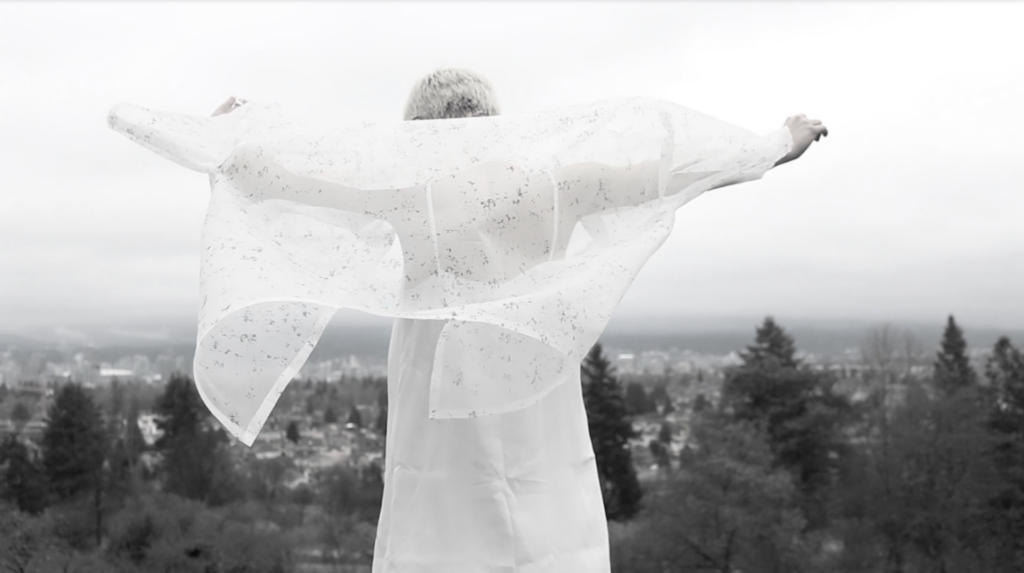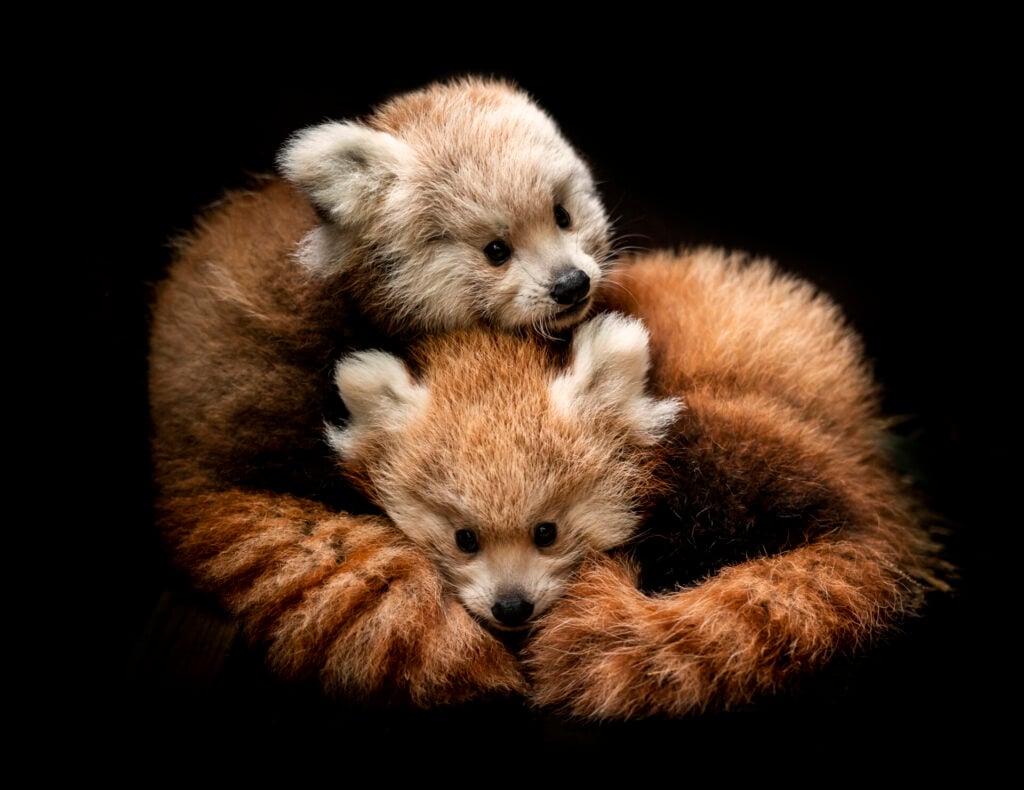‘Among all the objects we use we already have a very intimate relationship with our clothing – it becomes part of us, after all – but we don’t typically think deeply about it. But the fact is that we care more about things when they’re alive,’ argues Roya Aghighi, a Toronto-based “design investigator”. ‘I think we’d be less likely to just toss a shirt that was ‘alive’ into the washing machine or closet. We’d have to tend to it.’
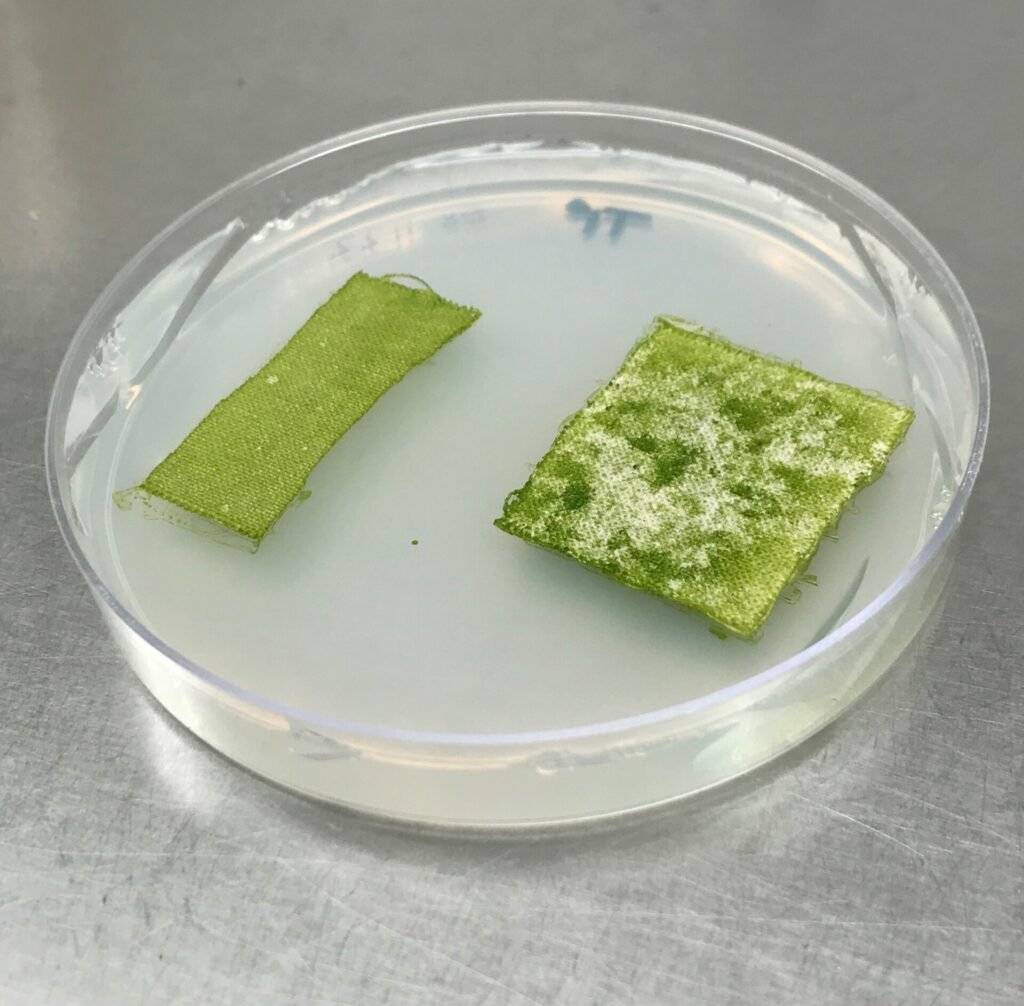
Indeed, if, among sustainability issues, the recyclability of textiles has become ever higher in profile of late, Aghighi is thinking even further ahead. With the help of scientists at the University of British Columbia, she has developed Biogarmentry, a biodegradable living textile capable of photosynthesis. She has already created a proof of concept of the 100 per cent natural and biodegradable fabric made from algae that turns carbon dioxide into oxygen, meaning the material purifies the surrounding air.
Green Algae biogarments
To make the textile for the biogarments, a single-cell green algae is spun together with nano polymers, the resulting living cloth being bonded to form a fully composable garment. And while the life-cycle of each garment is dependent on how it is taken care of, it forces us to re-examine our current relationship to clothing.
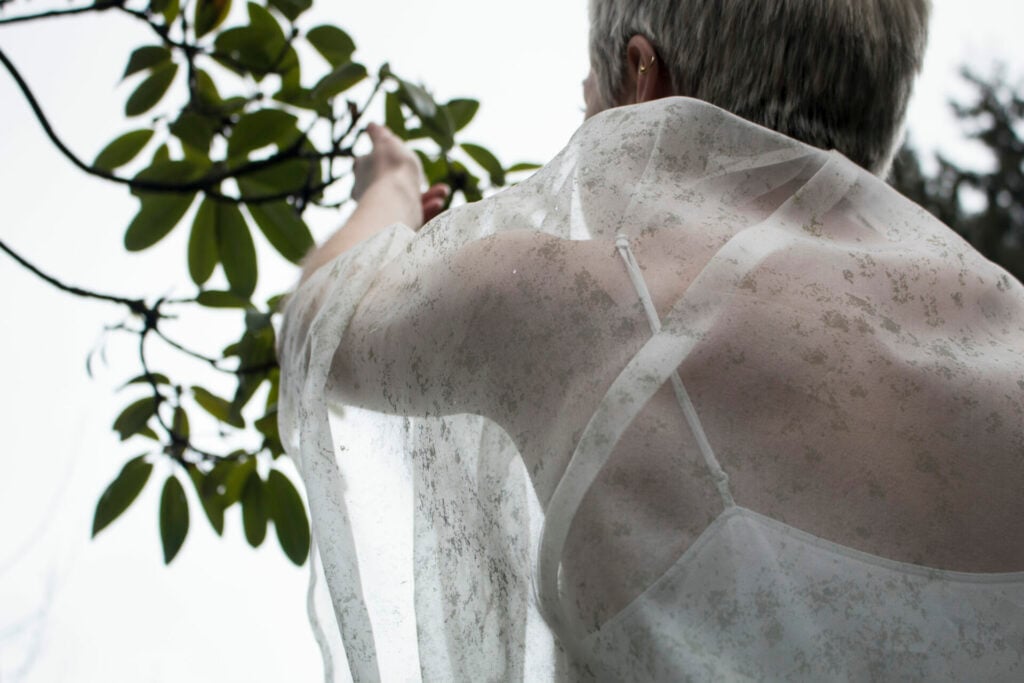
Biogarments come with unique care instructions for the wearer to keep their photosynthetic garment alive, which ‘encourages a shift in our current perceptions of fashion and how we treat it.’ New biogarments, the labels make clear, have to be left in direct sunlight for two hours before wearing to activate the green living cells. To date, the life-cycle is a few months, before the garment is composted.
‘The fact that a biogarment is living may cause you to cherish the one or two you have, rather than over-consume.’
‘Sure, some people would be freaked out by the idea of wearing a living garment,’ she concedes, ‘but even that provokes a conversation about it being a dependent being, like your house plants, or pets.
‘And much like you don’t normally have tens of pets, or children, the fact that a garment is living may cause you to cherish the one or two you have, rather than over-consume.’
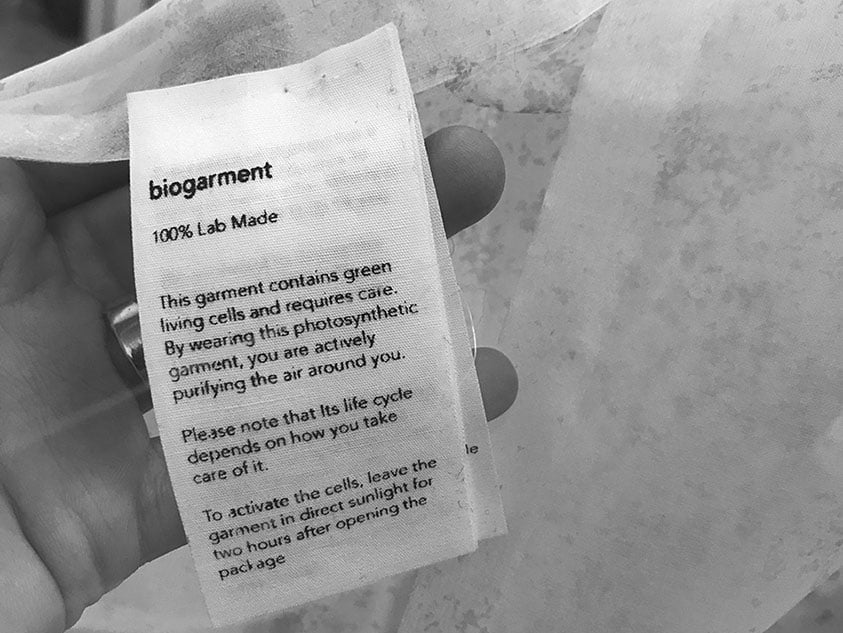
Aghigi is just one of a new generation of designers looking at the collaboration between nature, design and science to give textiles, sometimes termed bio-textiles, a more sound relationship with nature.
They’re eschewing production processes that use fossil fuels, as is the case for 62 per cent of clothing – the fashion industry produces more manmade CO2 emissions annually than global aviation, according to Our World in Data, 2020, Climate Change and Flying and moving towards the kind of product that has a net benefit, by sequestering carbon. And algae is certainly proving an intriguing resource.
The New York-based industrial designer Charlotte McCurdy, for example, has developed a proof of concept water-resistant raincoat, made from a plastic-like, but carbon-negative material, created from algae. McCurdy says that she is keen to shift the green conversation around clothing away from the doom-mongering insistence that the only solution is to consume less of it, and towards a positive way of continuing to enjoy it.
She has been working with the fashion designer Phillip Lim to create a dress using the same material, right down to the creation of the first algae-based, bio-degradable sequins.
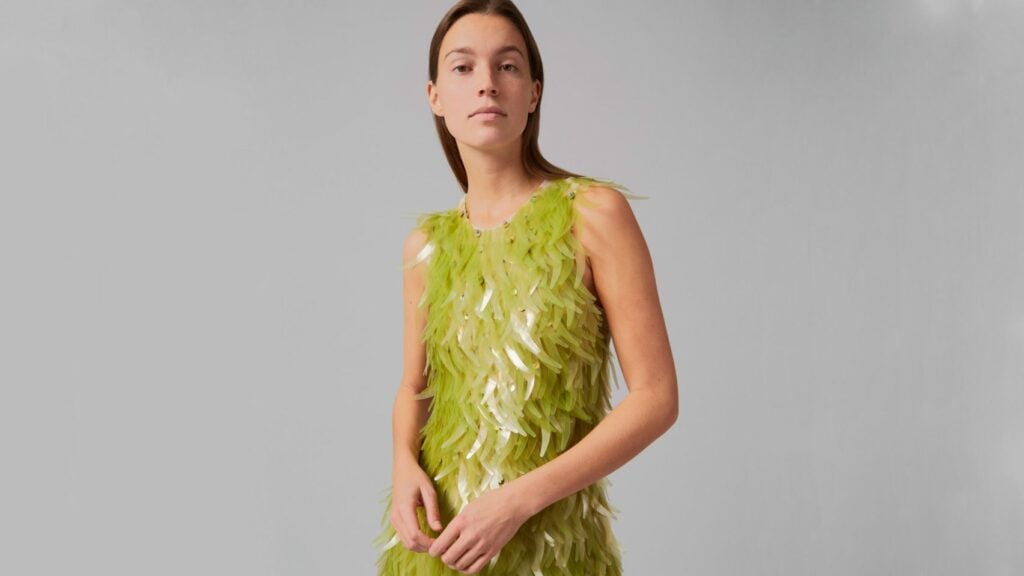
‘Clothing is important because it’s a way of making the climate discussion personal, when people feel they can’t do much about it because so much of what needs to be done seems to be about national or international policy, rather than our daily lives,’ argues McCurdy. ‘Phillip’s first question to me was about the colour – and that added to the conversation because so many dyes are problematic environmentally, too. [The green was derived from mineral pigments.] And then he wanted to talk about sequins, which isn’t the kind of topic that typically comes easy to me. But apparel is not trivial at all, so even making a sequin in the way we have is life affirming.’
Kelp Yarn
And while the dress is predominately a concept at the moment, and is only available to order, not on general sale, McCurdy isn’t alone in looking to algae. Algiknit is a New York-based bio-materials research company that is developing durable yet rapidly degradable yarns from kelp, a large, brown seaweed which happens to be one of the fastest-growing organisms on Earth.
‘The incredible regenerative power of kelp is indicative of its potential,’ explains Algiknit’s chief technical officer Aaron Nesser, ‘and kelp is currently used in a wide range of industries as an emulsifying or bonding agent, and as an ingredient in quite a few food and cosmetic products. This said, there is, most definitely, a lack of exploration and innovation in finding other applications for kelp. The fashion industry is starting to take steps in the right direction.’
‘There’s potential for carbon neutral clothing to become the new luxury clothing. Ideas in bio-materials that were sci-fi a few years ago we’re now actually doing.’
Dr Mark Lui, University of Technology, Sydney
Dr. Mark Lui, of the University of Technology Sydney, agrees – as well might a pioneer of non-Euclidian fashion pattern-making, a way of using mathematics to consider curved surfaces, such as those that fit around a body, in order to minimise textiles waste in fashion production. ‘I certainly think there’s potential for carbon neutral clothing to become the new luxury clothing,’ he suggests. ‘Its’ sustainability will be what defines it as luxury – the kind of fabrics bio-design will provide especially suit the more comfortable way we dress now too, [after] lockdown. Ideas in bio-materials that were sci-fi a few years ago we’re now actually doing.’
Bio Design
And, while algae, thanks to its adaptability and abundance, seems to be stealing a lot of the limelight, it’s not the only bio-organism getting textile technologists’ attention. Frustrated by the use of plastics in footwear, Jen Kean is a UK-based designer, co-founder of Modern Synthesis, and ex-materials designer for Adidas. She’s developed a form of ‘microbial weaving’, using a specific strain of bacterial cellulose to create a strong and lightweight hybrid material that is grown rather than spun or woven. To date she has grown a single piece shoe upper as a demonstration of this new approach to materials design.
Getting this kind of bio-textile accepted won’t be easy, Kean reckons, not least, she says, because even the most un-germophobic person tends to think of bacteria as being inherently bad, or unclean. And, she adds, while the idea of growing clothing and biogarments is slowly taking hold, there are other misconceptions to overcome: ‘that it only results in some kind of brown, teabag-like material,’ she says.
‘Bio-design is still very much a niche field, but I do think we’re slowing moving towards an entirely new, nature-driven approach to [textiles and other] design, in which we’re inspired by nature, by the properties of an organism and how it behaves,’ Kean adds. ‘Microbes are endlessly renewable so we need to understand how to use them.’


